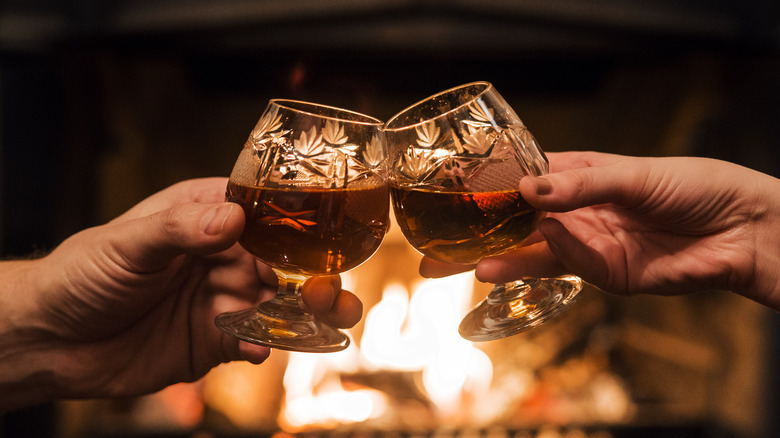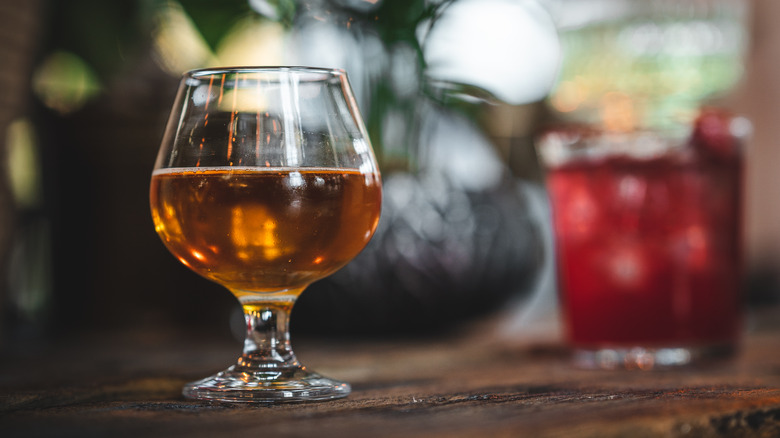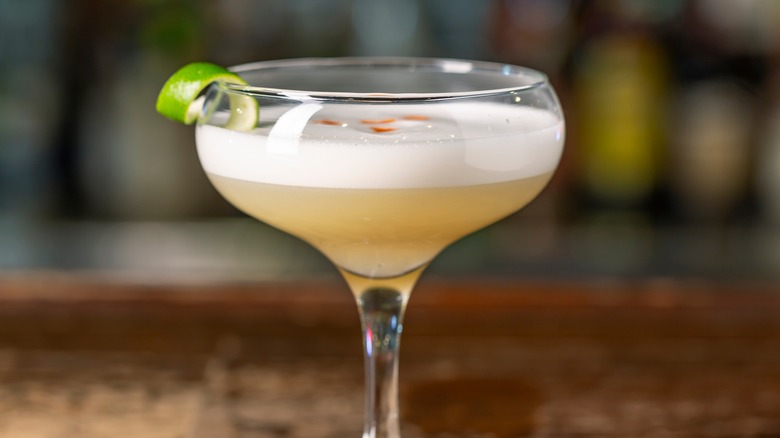How To Drink Brandy For The Full Flavor Experience, According To A Mixologist
Brandy is an alcohol that deserves a bigger place on your shelf. These fruit-based spirits deliver smooth, rich flavor profiles that make them an excellent neat drink, cocktail base, and even a liquor to soak fruits in for a blast of extra flavor. While brandies can certainly be sipped out of any glass you please, using the right technique to serve it will really bring out its special character and wake you up to its amazing complexity. To help you get the most out of your brandy, Food Republic spoke with Molly Horn, chief mixologist and spirits educator at Total Wine & More, one of the biggest independent fine wine sellers in the United States.
Horn had a lot to say about enjoying these fruity liquors, but her biggest piece of advice for drinking them is to nail the serving temperature. Much like any other spirit, brandy releases more of its aromas when it's a little warmer, but Horn warns that if you go "too hot [...] the full proof of the spirit will assault your nostrils." She recommends a temp of 70 degrees Fahrenheit to stop harsh alcoholic fumes from overpowering your nose and tastebuds. You'll be able to fully taste the fruits used in the spirit's base, and as well as its warm, sweet, spicy, or woodsy notes.
The glass that you use to serve brandy also matters
Aroma plays a huge factor into people's perception of food, and doubly so for alcohol. While our taste buds can detect the basic flavors, smells are what really allow the brain to detect the nuances of the ingredients. To get the most aroma out of brandy, Molly Horn recommends tasting it in a snifter glass. These drinking vessels are also referred to as brandy snifters for a good reason. The shape, which is bulbous on the bottom and tapered at the top, traps the liquor's scent inside the glass and then opens it up to your senses.
Before you sip your drink, Horn recommends swirling the snifter glass in order to "release delicate fruit and nut flavors while tapering them to direct them toward the nose." Swirling a common technique used to warm up liquor and bring out its scent. As far as what to expect in terms of taste, Horn says it greatly varies depending on the type of brandy you're sampling.
Most brandies, such as Cognac and Armagnac, are made from grapes, but you can find varieties that use different fruits as the lead ingredient. Horn notes that unaged Pisco has "a lot of floral and herbaceous notes (almost akin to some highland tequilas)," while apple-based Calvados offers "hints of vanilla, oak, and baking spices, which will become stronger as the aging time frame increases."
More tips for selecting and serving brandy
If you've never tried brandy and are looking for a good starting point, Molly Horn recommends the aforementioned Calvados. She notes that this variant's apple cider-like flavor, combined with its notes of toasted spices and stewed fruits, allows it to feel "approachable and relatable while still showcasing the range of what 'brandy' can mean." If you can't find a Calvados at your local liquor store, Horn recommends picking up a Cognac, a highly popular starting brandy due to its classic flavor and popularity in both mixology and cooking. Just make sure not to confuse it with Armagnac, which has a thicker texture.
Regardless of what brandy you're looking for, Horn says to watch out when tasting and smelling samples. She warns against a harshly alcoholic scent that "reminds you of nail polish remover or feels like it hurts your nose just to smell it from even a few inches away". The smell and taste of a quality brandy will not be musty, either, but highlights the fruit and other notes of nutty, floral, or even vegetal flavors.
While many enjoy brandy by itself or with ice, this spirit can really spruce up a cocktail. Horn recommends a classic Cognac-based sidecar or a Pisco sour, since these drinks complement the complex flavors of their particular brandy variety. You can even mix up a controversial brandy Old Fashioned — an unconventional but tasty version of the original whiskey-based recipe.



